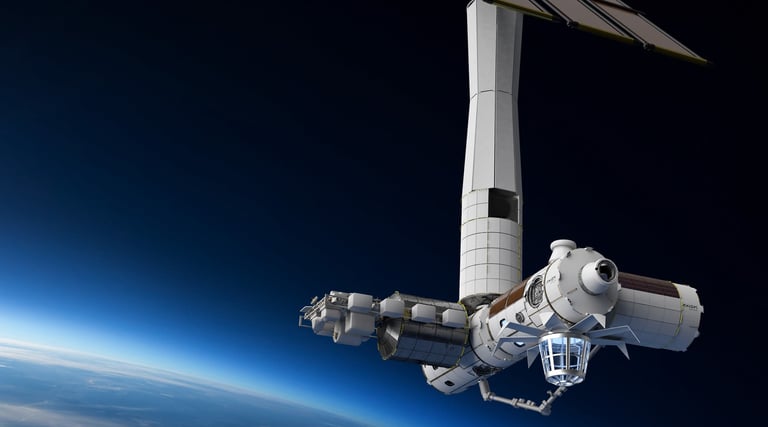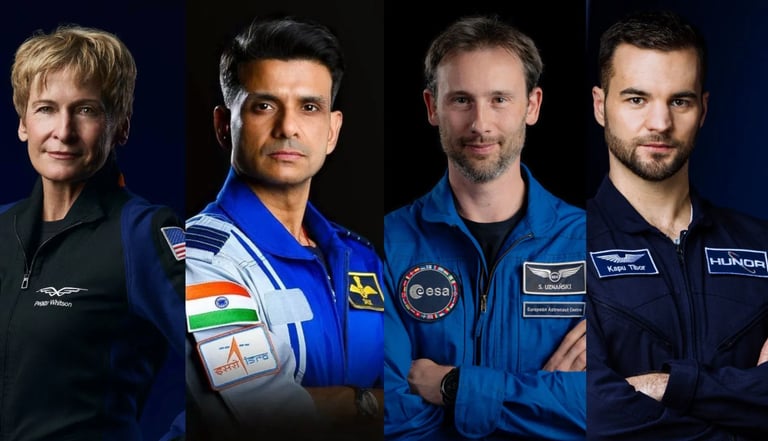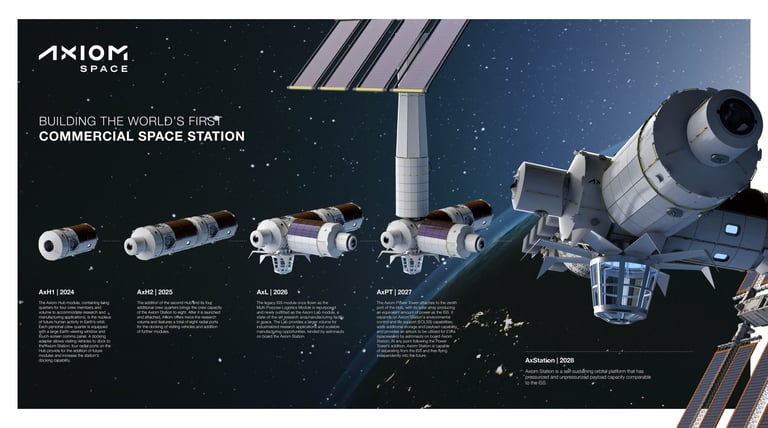Axiom Mission 4: Ushering in the Next Era of Commercial Space Exploration
A deep dive into Axiom Space’s fourth private mission to the ISS, highlighting the international crew, mission goals, scientific objectives, and what this means for the future of human spaceflight and the rise of commercial space stations.
SPACE MISSIONCOMMERCIAL SPACEFLIGHT
Divyaj
2 min read


Mission Objectives and Timeline
Ax-4 is scheduled to lift off aboard a SpaceX Falcon 9 rocket from Launch Complex 39A at NASA’s Kennedy Space Center at 9:11 a.m. EDT (6:41 p.m. IST) on June 8, 2025. Once docked, the crew will spend up to 14 days aboard the ISS, carrying out over 60 science, outreach, and commercial activities—the most research-intensive itinerary in Axiom’s portfolio to date. A successful Flight Readiness Review on May 21 confirmed all systems and personnel are “go” for this milestone mission.
Meet the Crew
Commander Peggy Whitson: A former NASA astronaut with nearly 700 days in orbit—Whitson returns for her second Axiom flight, bringing unparalleled experience to Ax-4.
Pilot Shubhanshu Shukla: Representing ISRO, Group Captain Shukla becomes the first member of India’s astronaut corps to fly to space, conducting five ISRO-sponsored experiments and engaging with students live from the ISS.
Mission Specialist Sławosz Uznański-Wiśniewski: The second Polish astronaut since 1978, Uznański brings ESA expertise and will lead several collaborative experiments in microgravity.
Mission Specialist Tibor Kapu: From the Hungarian Space Office, Kapu marks Hungary’s return to space after over four decades, supporting both scientific and outreach objectives.
Science, Outreach, and Commercial Activities
During their stay, the Ax-4 crew will execute more than 60 experiments spanning biotechnology, materials science, human physiology, and space agriculture—key areas for long-duration exploration. Notably, Shukla’s ISRO-backed investigations will explore microbial adaptation, muscle atrophy, crop resilience, and cognitive effects of prolonged screen use in microgravity. Beyond the lab, the crew plans live interactions with students across India, Poland, and Hungary, inspiring the next generation of space enthusiasts.
International Significance
Ax-4 stands as a beacon of global cooperation: it’s the first ISS mission featuring crew from India, Poland, and Hungary, and only the second commercial flight to include government-sponsored astronauts. For India, it dovetails with ISRO’s Gaganyaan program by offering invaluable in-flight experience to Shukla ahead of India’s own crewed missions. For Poland and Hungary, Ax-4 renews their historic ties to human spaceflight, fostering new partnerships and national pride.
Paving the Way to Axiom Station
Beyond the immediate objectives, Ax-4 is a crucial step toward Axiom Space’s vision of constructing the world’s first commercial space station. Lessons learned in mission operations, life-support systems, and commercial utilization aboard the ISS will directly inform the design and deployment of Axiom Station—envisioned as a multipurpose laboratory and hospitality destination in low-Earth orbit. The success of Ax-4 will bolster investor confidence and demonstrate the viability of privately operated orbital infrastructure.
Conclusion
Axiom Mission 4 is more than a 14-day journey—it’s a statement of intent. By uniting seasoned veterans like Peggy Whitson with national pioneers such as Shubhanshu Shukla, Sławosz Uznański, and Tibor Kapu, Ax-4 showcases the transformative potential of commercial spaceflight. As we count down to June 8, the world watches not just for a launch, but for the dawn of a new era in which private enterprise and international partnership redefine humanity’s presence in space.




